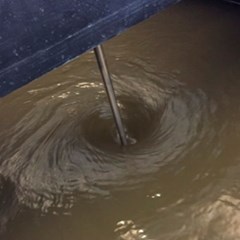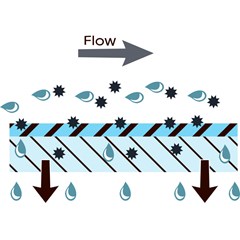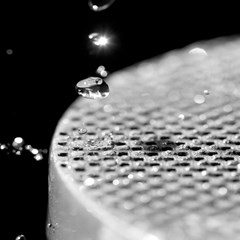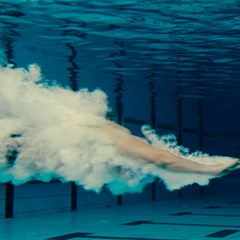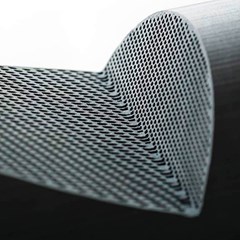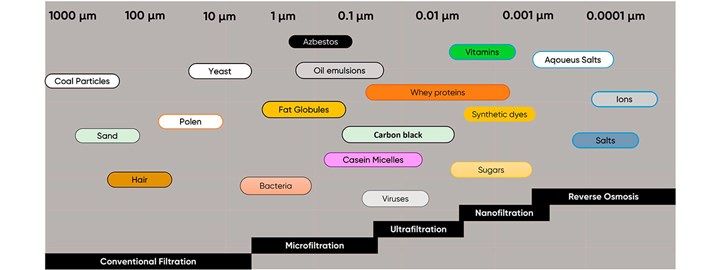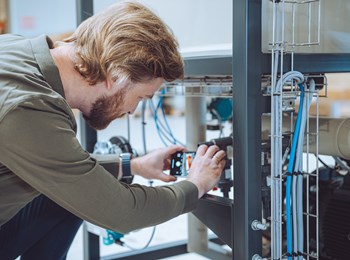What is microfiltration?
MF is a pressure-driven membrane filtration technology used within water treatment to remove micron-sized particles. The treatment process can treat various kinds of water and wastewater.
Within water treatment, there are several filtration techniques. These are separated into four ranges, which are microfiltration, ultrafiltration, nanofiltration, and reverse osmosis. It is the rejection rate that sets the filtration ranges apart. MF separates the largest particles, whereas reverse osmosis separates the smallest particles. Therefore, MF is an excellent range to consider if you do not know your exact liquid filtration needs.
Many industries heavily use MF to concentrate, purify, and separate macromolecules. It can separate large suspended solids, such as bacteria, fat globules, and colloids. Smaller particles and dissolved solids are not retained unless they are coagulated. MF can both be used for pretreatment before other filtration applications within nanofiltration or reverse osmosis to protect the sensitive membranes and posttreatment after conventional filtration methods.
